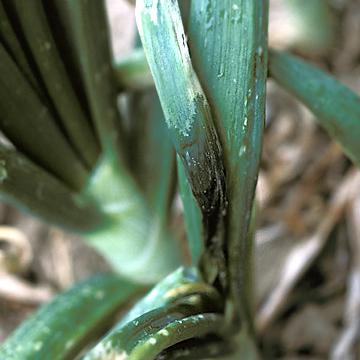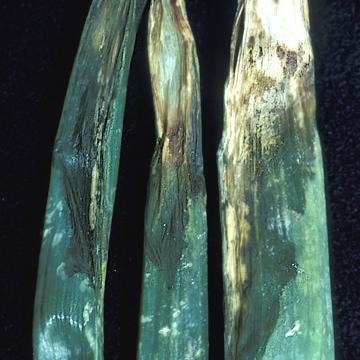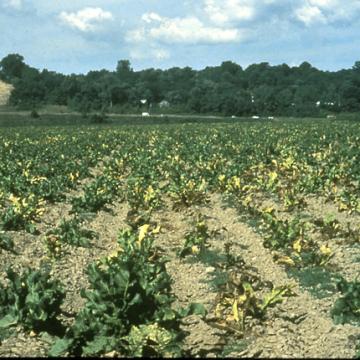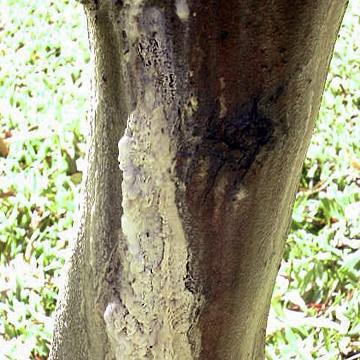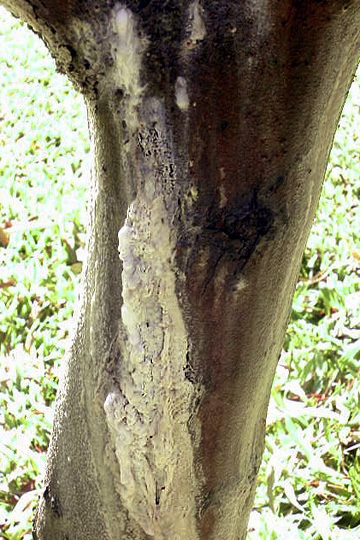DISEASE: Bacterial flower stalk and leaf necrosis
HOST: Onion
Dark, rotted areas of stalk and leaves caused by systemic invasion of the pathogen.
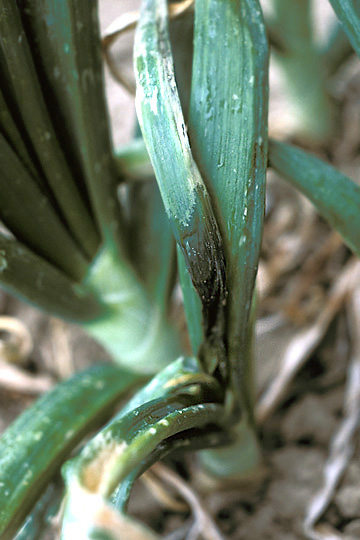
Bacterial flower stalk and leaf necrosis | Onion
DISEASE: Bacterial flower stalk and leaf necrosis
HOST: Onion (Allium cepa)
PATHOGEN: Pseudomonas marginalis pv. marginalis
SOURCE: S. Mohan
DISEASE: Bacterial flower stalk and leaf necrosis
HOST: Onion
Gray-brown rot of onion after inoculation. Disease starts as small, water-soaked lesions that later develop into slimy, gray-brown rot. The disease progresses downward from the stalk and may rot the entire bulb.
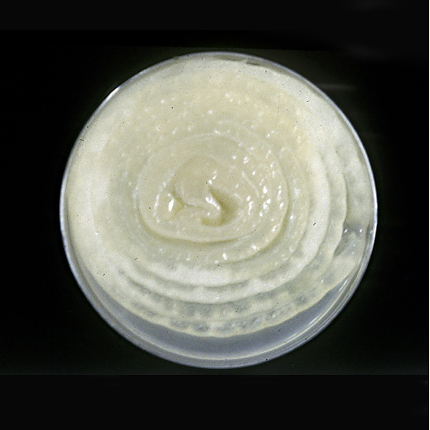
Bacterial flower stalk and leaf necrosis | Onion
DISEASE: Bacterial flower stalk and leaf necrosis
HOST: Onion (Allium cepa)
PATHOGEN: Pseudomonas marginalis pv. marginalis
SOURCE: R. Gitaitis
DISEASE: Bacterial flower stalk and leaf necrosis
HOST: Onion
Leaves with necrosis and rot. The common name for this disease is the same as those used for two other diseases. Also, another common name for this disease is bacterial soft rot.
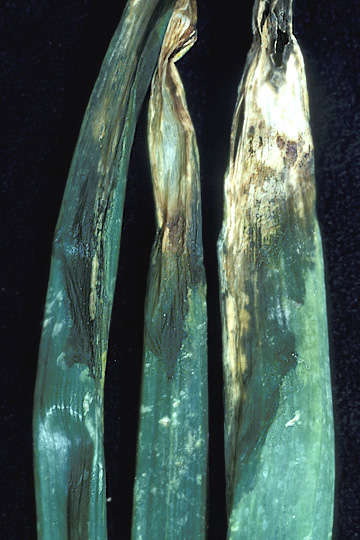
Bacterial flower stalk and leaf necrosis | Onion
DISEASE: Bacterial flower stalk and leaf necrosis
HOST: Onion (Allium cepa)
PATHOGEN: Pseudomonas marginalis pv. marginalis
SOURCE: S. Mohan
DISEASE: Brittle root
HOST: Horseradish
Dying, stunted, yellow to brown horseradish plants.

Brittle root | Horseradish
DISEASE: Brittle root
HOST: Horseradish (Armoracia rusticana)
PATHOGEN: Spiroplasma citri
SOURCE: C. Eastman, M. Davis
DISEASE: Brittle root
HOST: Horseradish
Close-up of stunted, yellow horseradish plants.

Brittle root | Horseradish
DISEASE: Brittle root
HOST: Horseradish (Armoracia rusticana)
PATHOGEN: Spiroplasma citri
SOURCE: D. Sherrod
DISEASE: Brittle root
HOST: Horseradish
Horseradish with discolored internal tissues. Healthy root segment (top right).

Brittle root | Horseradish
DISEASE: Brittle root
HOST: Horseradish (Armoracia rusticana)
PATHOGEN: Spiroplasma citri
SOURCE: J. Fletcher, M. Davis
DISEASE: Foamy canker
HOST: Almond
White, macerated tissues near cambium region is characteristic of disease. Foam is usually associated with cankers. The disease is suspected to be bacterial but the causal agent has not been identified.

Foamy canker | Almond
DISEASE: Foamy canker
HOST: Almond (Prunus dulcis)
PATHOGEN: Causal agent unknown
SOURCE: B. Teviotdale
DISEASE: Foamy canker
HOST: Almond
Amber red-colored ooze sliding down the trunk. The causal agent has not been identified.

Foamy canker | Almond
DISEASE: Foamy canker
HOST: Almond (Prunus dulcis)
PATHOGEN: Causal agent unknown
SOURCE: B. Teviotdale


